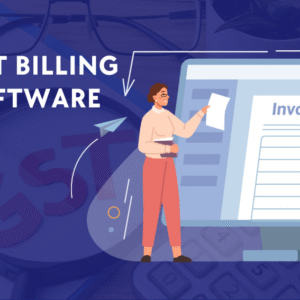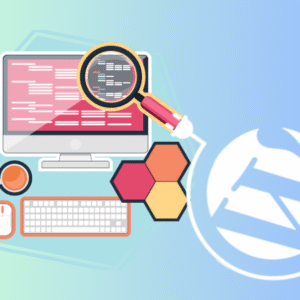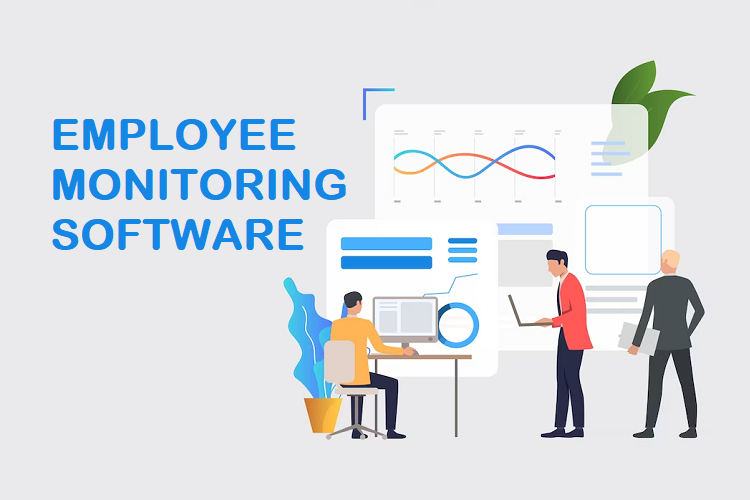Cybersecurity and information technology aim to keep users, gadgets, and data safe, but they do this in distinct ways.
IT means “Information Technology,” which uses computers, networking equipment, and software to store and share information. Protecting networks, computers, and digital assets from intrusion is the primary goal of cybersecurity.
Any field requires its members to perform particular duties. If you enter IT or cybersecurity, you must keep sensitive data and human beings safe from hackers. Identity fraud, data loss, illegal access to email or databases, and the installation of harmful software are some of the many adverse outcomes of a hack.
Here’s a deeper look at the similarities and differences between IT security and cybercrime.
IT Security vs. Cybersecurity: What are the similarities?
Let’s begin by clarifying the possibility of misunderstanding between two words with comparable meanings. Both terms describe measures taken to prevent unauthorized access to or use of an information system or to restore it to a previous state after an attack.
Furthermore, there is a strong relationship between internet security and IT security. Although the two processes are comparable and can work together effectively, it is important to distinguish between them for optimal results.
The actual protection of data is an issue in both internet security and IT security. Both approaches take precautions against data leaks, such as securing the door to the server area and allowing only authorized personnel inside.
In addition, IT and cyber security evaluate the worth of the data they intend to safeguard. In other words, both practices aim to prioritize the essential data. For instance, suppose you manage a bank. The inventory of your customers’ names is valuable information, but protecting their ID numbers, PIN codes, and addresses is arguably more crucial.
Most precautions are taken to protect sensitive data in IT and cyber security.
What is IT security?
IT security is a much broader subject than cyber security in that it enables one to safeguard not only data that has been recorded digitally but also data that is both confidential and essential and needs to be protected. This type of data requires security and protection according to Lumify Work Australia.
IT security responsibilities include:
- Physical security – restrict entry to confidential components by unwanted individuals.
- Safety from technological breaches – Information kept on the network or en route to or from the network is safeguarded by technical security measures.
- Administrative security – refers to the rules and procedures to limit malicious or inappropriate network activity.
If you are an IT security professional, you can possess functional cybersecurity knowledge without specializing or working in the field. IT security professionals can handle everything from ensuring company devices’ physical security to ensuring network connections consistently. The scope is quite broad.
Types of IT Security
Here are some of the types of IT security that can help businesses keep essential data secure:
- Access Controls: These security measures determine which employees can handle sensitive business information and resources. It limits employees’ ability to utilize the company’s internet resources physically.
- Compliance Controls: Cybersecurity norms and data protection legislation are their focus, with the latter having the reduction of security risks as its stated goal. They require the evaluation of risks associated with data security and the enforcement of related regulations.
- Procedural Controls: The company’s tangible assets, such as data centres, computer systems, etc., will be monitored to identify and mitigate security threats. They also include a security structure, event reaction protocols and strategies, security awareness training, and compliance education.
- Technical Controls: Multi-factor authentication (MFA) is used for logins, by antiviral and protection programs, and elsewhere to increase security.
Why IT Security is important?
When it comes to the safety of a company’s data, cyber security and iIT security play critical roles in the operation of the business. Here are some of the more critical functions performed by information security:
- Assurance of the company’s continued capacity to operate effectively
- It protects the information gathered, maintained, and utilized by the organizations.
- It gives businesses the ability to run applications safely within their IT infrastructures.
- It safeguards the technological assets of the organization.
Now that you know what IT security is and how it safeguards the data of both people and businesses, let’s quickly define cyber security before reading about how it differs.
What is Cybersecurity?
Understanding the importance of the data, the threats it faces, where it resides, and more are essential for keeping it safe. With this, you aim to protect private and crucial information from prying eyes.
Cybersecurity experts aren’t worried about protecting the hardware of devices like servers, PCs, routers, switches, modems, iPads, cellphones, and more, but they protect the information stored on them.
Types of Cybersecurity
Cybersecurity encompasses a wide variety of subfields, each of which presents its unique challenges to experts. Below are the following:
- Network Security: This security category protects networks from being misused, interrupted, accessed by illegitimate parties, and experiencing service disruptions. Kaspersky is among the most effective network security programs available.
- Cloud Security: It is a combination of several different processes, safeguards, technologies, and policies intended to function together to maintain the safety of cloud-based applications and infrastructure.
- Application Security: This procedure helps to identify, repair, and improve application security. As a result, businesses can better prevent criminals from obtaining their application code and data.
- Critical Infrastructure: It makes use of a variety of programs that can perform a variety of security-related tasks, such as anti-malware software, virus detectors, and other similar applications.
Why cybersecurity is important?
Cybersecurity and IT security are equally crucial when protecting sensitive company information from external dangers. Several of the most crucial reasons cybersecurity is crucial to businesses are discussed below.
- Both people and businesses are vulnerable to cyber assaults.
- There have been more cyberattacks because of the fast pace of technological change and development.
- If a company doesn’t invest in Cyber Security, malicious actors can cause significant harm to the company, its operations, and the loss of data and employment.
- The victims of cyber assaults are not limited to corporations.
- New and better regulations to safeguard people and businesses from cyber dangers can be developed with the assistance of cyber security experts.
How do IT security and Cybersecurity overlap?
Since both cybercrime and computer security are often used interchangeably, there is an overlap between the two.
Today’s information is kept online on a local or remote website or in the cloud. Intruders in the cyber realm can profit from this data if they can obtain it.
For both, protecting the data’s importance is important. IT security focuses on keeping sensitive information secret while keeping critical systems online and accessible at all times. Keeping information from being accessed inadvertently online is the main focus of cybersecurity.
In both cases, a security structure that includes adequate security must be created to prevent illegal access to sensitive information. It starts with understanding which data if viewed without permission, would cause the most significant harm to the company.
Where the world’s distinct teams have dedicated resources, both teams will likely collaborate to develop a secure data framework, with the information security group choosing the data to be secured and the cybersecurity team establishing an agreement for data protection.
IT Security vs. Cybersecurity: What Is the Difference?
Now, let us go over the differences between IT security and cybersecurity in depth so you can tell the difference and comprehend which technology to use.
The systems used to store and communicate digital information are the primary emphasis of information technology. Conversely, cybersecurity primarily protects the digital information housed within those networks.
The primary targets of cybersecurity measures are typically the data and systems that exist in the digital realm. Some examples of infrastructure are data centres and local area networks that hold and exchange information.
Cybersecurity, in a nutshell, is the practice of guarding against unauthorized access to sensitive information stored on computers, networks, or software.
Individuals who work in IT and cybersecurity go by a wide range of names that indicate their level of schooling, expertise, and scope of responsibility. IT security is a subfield that keeps sensitive data, systems, and networks secure.
Any plans to protect digital assets and keep an eye out for potential security breaches are possible outcomes of the work of IT security specialists. The data may be protected, but they may also take measures to safeguard the hardware that stores it.
IT security protects devices and data from unwanted access. On the other hand, Cybersecurity is considered part of computer security by some experts. Information technology, cybersecurity, and information security workers often share duties.
InfoSec protects data during transfer and storage. Information security covers all types of data.
IT specialists develop and police user, network, and data security rules. Professionals in IT security teach people who use networks about security issues and urge them to follow security standards, examine security events, and record what occurred to stop recurrent threats.
Final Thoughts
By the end of this blog post, you should better understand the distinctions and parallels between the two main types of data protection and the reasons for the common confusion between them.
Keeping sensitive data safe is a top cyber and IT security priority. In this context, “IT security” encompasses various related topics. The system’s primary goal is to prevent data loss under any circumstances. It also works with both digital and physical data. Cybersecurity, in contrast, addresses not only digital information but also cyber-related issues like offences, assaults, scams, law enforcement, and more.






